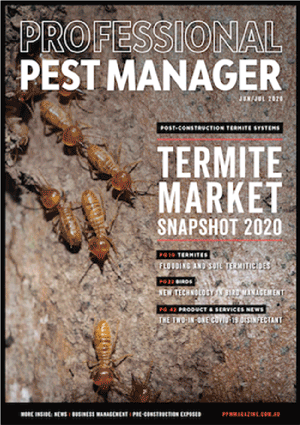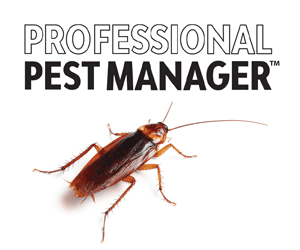Whilst the good old donger still has a place in the inspector’s toolkit, researchers are now investigating more advanced methods of termite detection within timber.
Latest termite detection research
A review of termite detection and monitoring techniques in buildings
Accurate detection of termite activity in buildings is critical in any termite management plan. Even though the standard termite inspection in Australia is classified as a visual inspection, various pieces of equipment and tools that detect termites can be used to support the inspection or used in an invasive inspection. The accuracy of these different pieces of equipment and technologies varies, partly due to limitations of the technology and partly due to the skill of the operator in understanding these limitations, using the equipment appropriately and correctly interpreting results. A recent review paper provides a thorough overview of the various technologies, their accuracy and limitations.1 A summary is provided here.
Two common pieces of equipment used by termite inspectors are moisture meters and borescopes. In Australia, moisture meters would be used in every termite inspection. Whilst useful at detecting sources of moisture, a moisture meter does not determine the cause of the increased moisture levels, whether due to a leak or termite activity. Its accuracy depends on the building materials under the sensor and even if used directly on wood, moisture level readings will vary depending on environmental conditions and the type of wood. The ability of the operator to understand the limitations of the device and interpret results is integral in its use to accurately detect termites.
The moisture meter has proven ability to detect moisture brought into hidden areas by subterranean termites but equally will not be able to detect drywood termite activity. Borescopes are commonly used in inspections, although due to the general need to drill into materials, they are typically only used in invasive inspections. Nevertheless they can be very useful even though time-consuming, as they can provide a definitive result for the area in which they are used.
Acoustic detection is an area of active research. Termites make noise through their foraging activities and communication (head banging). Research is focused on both detection and monitoring. The challenge is not only detecting the sounds of termites but separating those sounds from the background noise. It’s not easy; accuracy depends on the sensor, substrate characteristics and termite species, amongst a number of factors. Much of the research is based on piezoelectric technology and with an accuracy rate of over 80%, the technology has potential. Of course, older acoustic detection technology, such as stethoscopes, have been used for many years in inspections. However, there is no data to demonstrate their accuracy, which is largely dependent on the skill of the operator and his or her ability to interpret the sounds. Stethoscopes also function poorly on rough surfaces.
Microwave technology, as utilised in Termatrac devices, has proven both popular and fairly accurate, although much still depends on the skill of the operator. The technology, as used in Termatrac, still has some limitations in only being able to penetrate 5 cm into the timber. With its limited field of view, it would take time to scan a whole room, if it was required.

Infrared thermography (used in ‘thermal cameras’) is a commonly used technology in inspections. Its accuracy is very much dependent on the quality/specification of the equipment and the skill of the operator. Part of the skill is understanding the limitations of the equipment and interpreting the results.
Gas-based technologies can be used to detect termite emissions such as carbon dioxide and methane, and even complicated gaseous mixtures. A few commercial detection devices have been released although research remains ongoing into this ‘electronic nose’ technology.
The use of vibration profiles is also a key technology under research. When a vibration at a specific frequency is applied, structural timber will have a specific vibration response, and this will change as the wood becomes damaged by termites. The challenge with this technology is that different wood species have different vibration characteristics and these can also be impacted by other timber pests, decay and moisture content.
The use of x-rays and computerised tomography (CT) has proven to be a highly accurate method of timber pest inspection, allowing detection and characterisation of damage patterns. Not only does this technology allow for correct detection, it allows for assessment of damage levels – vital information for determining load-carrying capacity and structural safety. Whilst quick and easy to use for a trained operator, its cost and the need for comprehensive training means it is not widely used in the pest industry.

The use of termite sniffer dogs (main picture, above) can be a highly accurate, flexible and efficient tool to increase the accuracy of termite inspections. Although scientific studies are lacking, trainers and users of termite dogs will vouch for their accuracy. A well-trained dog (with a well-trained handler) can detect small groups of termites, termite frass and even old termite damage. The accuracy and utility of termite sniffer dogs depends on the choice of dog and training method. Additionally, the stimulus used for the training – the number of different species, frass, damaged wood, etc – is of great importance. Whilst they offer significant benefits – accuracy, speed and ability to access small areas – there is a significant up-front cost as well as the ongoing costs and responsibility of owning a dog.
To offer a comprehensive termite inspection, a quality termite inspector will generally have access to and utilise several pieces of detection equipment to cover the wide range of situations encountered and to cross-check findings by using different technologies.
How to carry out a termite survey in the field
Whilst not normally a concern for pest managers, for researchers it is sometimes important to survey large areas for termite activity, to determine species composition and abundance. Researchers have compared the results from two common methods in the tropical savannahs of northern Australia – baiting and visible inspection.2 The baiting method involved the use of termite baits in a grid and evaluated wood, paper and straw baits. The visible inspection used a reduced transect method, where a 60 x 2 m transects (in between the rows of the baiting grid) were inspected for termite activity.
Previous studies had recorded 64 species within the study area. The visible inspection/transect method detected the most species (32 versus 20 in the baiting method), including 12 species not found in the baiting method. However, the baiting method resulted in more termite encounters and was particularly effective at detecting termites in the feeding group 1 (FG1) species group, which feed on dead wood or grass. The researchers concluded that the best method depends to a degree on the objective of the survey; if the objective is to get the most complete picture of species composition, then the transect method is the best. However, if surveying for FG1 species (including subterranean termites) and level of activity, the use of baiting is more appropriate. Furthermore, the use of paper (rather than wood or straw) and having limited inspections (to reduce costs) would be the optimal baiting methodology.
Technique to determine whether termites come from the same colony
Identifying termite colonies in the field, and in particular knowing whether termites collected belong to the same or different colonies, is a challenge for researchers. Using Syntermes grandis as a model, researchers used near-infrared spectroscopy (NIRS) and multivariate analysis to identify the colony origin of workers and soldiers.3
The methodology proved to have a 99.9% accuracy for workers and 98.3% accuracy for soldiers. Such a technique, which provides accurate identification of termites by colony, allows opportunities for researchers to better understand termite foraging behaviour and colony territories in the field. If a similar technique was available to pest managers, it could also be useful in determining whether more than one colony was attacking a particular building.
As a technology, NIRS uses infrared light fired at the termite sample to create an absorption spectrum, which reflects the chemical composition of the termite’s cuticle. With colonies having subtle differences in the chemical composition of their cuticle (used to identify nestmates), NIRS is sensitive enough to pick up these differences and therefore accurately identify which colony the termite belongs to. NIRS is a rapid, reproducible and relatively inexpensive technique. Portable NIRS devices are available and decreasing in cost, so its use in termite research and management has potential.
References
1 Hassan, B. and Nanda, M.A. (2024) ‘Detection and monitoring techniques of termites in buildings: A review’, International Biodeterioration & Biodegradation, 195. https://doi.org/10.1016/j.ibiod.2024.105890
2 Rochelmeyer, E. et al. (2024) ‘The efficacy and costing of termite (Blattodea: Termitoidae) survey methods in Australian tropical savannas’,Austral Entomology, 63(4), pp. 447–456. https://doi.org/10.1111/aen.12711
3 dos Santos, A. et al. (2024) ‘Colony identity clues for Syntermes grandis (Blattodea: Termitidae) individuals using near-infrared spectroscopy and PLS-DA approach’, Environmental Entomology, 53(4), pp. 561–566. https://doi.org/10.1093/ee/nvae037
Electromagnetic induction sensor for termite detection
Monitoring of termite activity in bait stations is a labour-intensive activity and the action of opening and closing bait stations can disturb any termites present. As such, the use of a suitable sensor system to allow remote monitoring would be beneficial. Apart from ensuring that it is cost effective, accuracy and durability are important. A number of different technologies have been evaluated for this purpose and indeed some products are already on the market. Systems include acoustic devices and sensors using a looping circuit of silver particle emulsion
painted on the bait surface or other material within the bait station.
Researchers in China have developed a DEKAN electromagnetic induction with non-looping sensor, which separates the bait and the electronics.1 A central sensor (which is surrounded by bait blocks) detects changes in electromagnetic induction that occur when the termites are feeding. The sensor delivered over 97% accuracy in the field, being triggered by a wide variety of termite species. With the sensors still operating accurately 24 months after placement, the authors believe this has potential for commercialisation.

The use of non-audible acoustic emissions from termite activity as a detection method
Given the cryptic nature of termite foraging behaviour, detecting termite activity in built structures is a challenge. Researchers are continuously assessing different technologies for their use in termite detection. Termites produce a range of sounds, usually inaudible to the human ear, through their foraging activities and communication. The use of sensitive audio equipment could therefore be an option for termite detection in wood, where their activity might otherwise be missed.
In this proof-of-concept trial, researchers demonstrated that piezoelectric sensors could detect Reticulitermes activity in pine wood samples (in laboratory trials).2 Furthermore, the technology has the potential to estimate the size of the infestation through the intensity of acoustic emission and multiple sensors could be used to determine the location of the infestation. Whilst the technology has potential, more work is required, including field trials. Variations and natural defects in wood, which will impact sound attenuation, represent one of the key issues to overcome.
In a separate study to investigate the potential for using sound to detect the presence of termites, the researchers make the critical point that for the technology to have use in the field, the termites need to be active when the inspection is carried out.3 This means it is necessary to identify the activity pattern for the species present i.e. to determine when they are most active and the duration of activity. It is also important to screen out any background noise. Certainly, acoustic detection is a real focus of research, but there are challenges to overcome if a successful detector is to be developed.
References
1 Fang, Z et al. (2023). A Wireless System for Monitoring Termite Activity Using Electromagnetic Induction with Non-Looping Method. Appl. Sci., 13(21): 11956; https://doi.org/10.3390/app132111956
2 Suarez, E. et al. (2023). Non-audible acoustic emission characterization of Reticulitermes termites in pine wood. European Journal of Wood and Wood Products, 81: 935–945
3 Nanda, A.N et al. (2023). Acoustic and temperature signals generated by subterranean termite infestation: its characteristics and implementations. https://doi.org/10.1080/26895293.2023.2167866
The use of acoustic emission to detect termites
The potential use of acoustic emission (AE) in the wood and timber industry is an active area of research. There are a number of areas where information on the density and structural integrity of wood is needed: wood machining monitoring, wood drying, wood fracture, timber structural health monitoring, termite infestation monitoring and quality control. Technologies that provide quick, accurate, in situ measurement would be of significant value to the industry.
Researchers have just completed a review of AE monitoring of wood materials and timber structures.1 AE has some challenges; there can be a lot of variability in the wood, along with the impact of moisture, which impacts the attenuation, reflection and refraction of the wave. Coupled with variations due to the issues that are the target of the detection device (e.g. termite activity) plus background noise, interpreting the data can also be difficult. Although a lot of research is ongoing in this broad area, the amount focused specifically on termite detection is quite limited. One of the key issues with termite detection is that it needs to be able to detect activity in structural timber within buildings rather than in isolated pieces of timber. As such, additional technical challenges exist in achieving accurate detection on site and condensing the technology into a portable device.
Using microwaves to detect drywood termites
Detecting drywood termites is more of a challenge due to their highly cryptic nature (no mud tubes) and diffuse nest structure (many small nests can be found throughout infested structures). In Australia, drywood termites are not part of the standard termite inspection process, which focuses on subterranean termites (AS 3660.2). To aid with detection, researchers in Queensland have assessed the suitability of using microwaves to detect drywood termite infestations.2
Using the Termatrac device (pictured above) – which uses microwave technology to detect pest presence and movement and is commonly used to detect subterranean termite activity – the researchers confirmed that it could also be useful in the detection of drywood termites. The researchers found that on the highest sensitivity setting, the device detected 97% of West Indian drywood termite infestations, with few false positives. It was sensitive enough to pick up activity even when a single termite was present. However, the detection success depended on the depth and density of the wood. Whilst the device could detect termites to a depth of up to 45 mm in southern pine, it could only detect termites to a depth of 20 mm in denser Tasmanian oak. The researchers concluded that microwave technology (and the Termatrac device) was a suitable tool for use in the detection of drywood termites.
Non-audible acoustic detection of termites
Termites produced audible sounds – it’s possible to hear them chewing wood and hear the ‘head-banging’ of soldier termites when alarmed. However, they also produce a range of sounds that are not audible to the human ear. Technology that can detect and accurately locate termite activity has potential in the detection of termites in buildings. A number of research groups are active in this area.
Researchers in Spain have recently published results looking into the use of piezoelectric sensors with sensitivity in the ultrasound range to detect Reticulitermes activity.3 Using prepared pieces of wood, artificially infested with termites, the research demonstrated that the sensors could detect termite activity, but not differentiate between termite castes (worker or soldier). Furthermore, they determined that by using several sensors, the location of the activity could be pinpointed. However, although the research provided a proof of concept, it was carried out under controlled conditions and the authors noted that variations in real-life situations would affect the results, such as knots in the wood, the presence of resins, cracks and other wood deformities. In addition to condensing the technology into a suitable device or system, the ability to interpret the data and screen out background noise would also be necessary. The authors do note that machine learning models would be useful in this regard.
For more information on how termites are detected during a termite inspection go to our termite inspection page.
References
1 Nasir, Vahid & Ayanleye, Samuel & Kazemirad, Siavash & Sassani, Farrokh & Adamopoulos, Stergios. (2022). Acoustic emission monitoring of wood materials and timber structures: A critical review. Construction and Building Materials. 350. 128877. 10.1016/j.conbuildmat.2022.128877.
2 McDonald, Janet & Fitzgerald, Chris & Hassan, Babar & Morrell, Jeffrey. (2022). Non-destructive Detection of an Invasive Drywood Termite, Cryptotermes brevis (Blattodea: Kalotermitidae), in Timber. 69. 10.13102/ sociobiology.v69i4.7881.
3 Suarez Vargas, Elisabet & Fuentes, Yaiza & Gaju-Ricart, Miquel & Gallego, Antolino. (2023). Non-audible acoustic emission characterization of Reticulitermes termites in pine wood. European Journal of Wood and Wood Products. 81. 10.1007/s00107-023-01948-1.
Finding timber pests in museums
In museums, the main focus of termite detection is on structural timber. However, a niche market exists for the detection of termites and other timber pest activity in high value items such as furniture and picture frames. This is particularly the case in museums where invasive inspection techniques are simply not possible.
Researchers in the US have recently developed a technique that combines a visual inspection with the use of CT scanning.1 The resulting images not only allow individual insects to be identified (in this case drywood termites in a picture frame) but also enable a full assessment of the item.
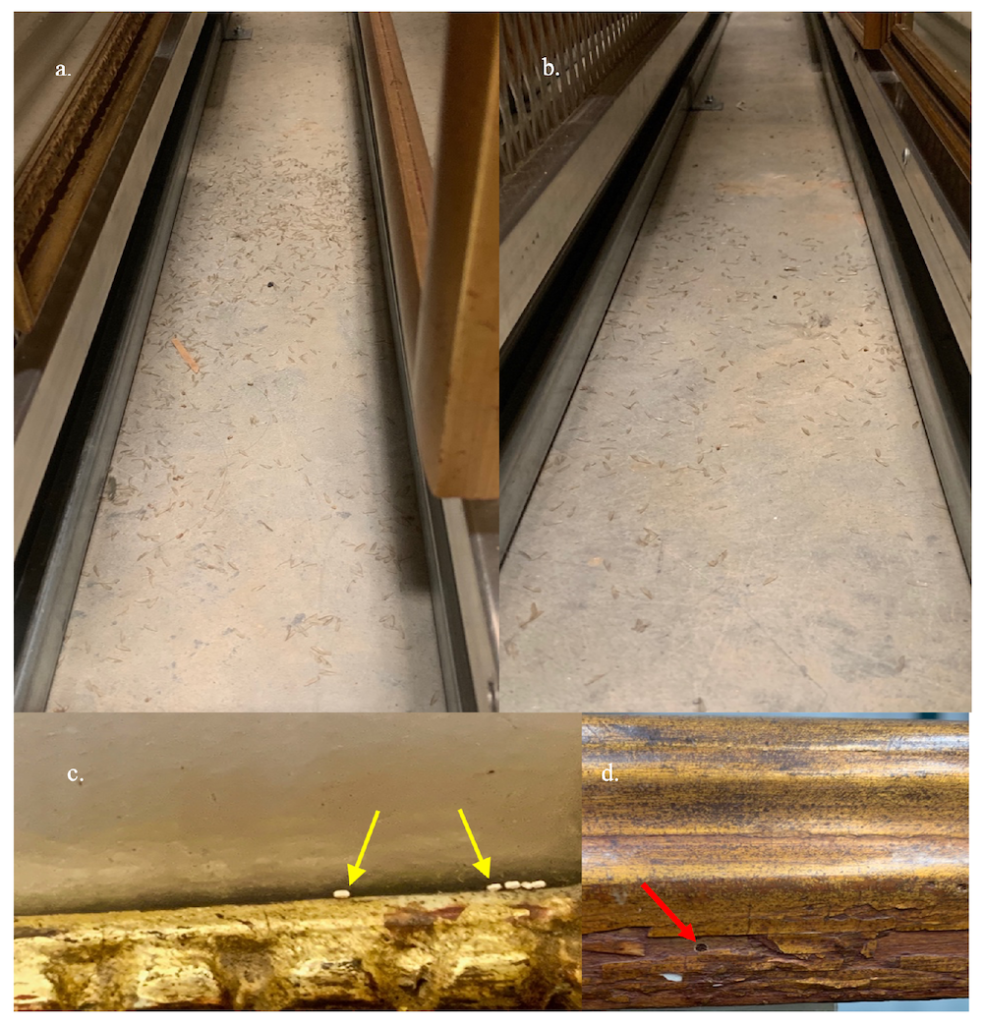
The inspection maps any damage and the quantity of wood loss — facts that determine the structural integrity of the frame. Appropriate decisions about treatment, restoration and ongoing management can then be made.
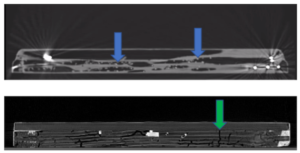
An important side note to this study was that although the museum storage room was held at a certain temperature and humidity level to minimise pest and mould issues, drywood termites were capable of thriving in the storage room for an estimated 15 years.
Powering up timber pest detection
Timber utility poles are a significant component of power and communication networks. Even with preservative treatments they are still susceptible to timber pests over time. However, using timber pest inspectors to assess the health of timber poles can be both inaccurate and time-consuming. As such, research into methods that can help in assessing the strength of power poles and determine the presence of timber pests is of significant value. Recent research has demonstrated that using stress wave propagation coupled with a neural network pattern-recognition algorithm can provide encouraging results, with the three models assessed producing between 81-92% success rates in identifying both healthy and defective poles.2
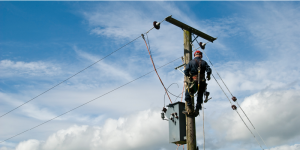
The ultimate donger
The ‘donger’, really any hard tool for tapping wood, is an essential part of the timber pest inspector’s toolkit. Experienced inspectors use the changes in sound to alert them to potential issues. Now, research has begun on ways to use deep neural networks to analyse the sound that results from hitting a piece of timber, to assess the condition of the timber.3 Using timber blocks with a single, drilled core through the middle, accuracy of the system was up to 92%, regardless of the shape of the timber piece and location of the ‘hit’ on the timber.
Although encouraging, the researchers noted that greater investigation is required. In particular to assess the technology in real-life situations — where damage is enclosed within a piece of timber (rather than a hole drilled all the way through), looking at different types of damage, and in different types of timber. However, unlike the stress wave methodology described previously, which requires a sensor to be installed prior to testing, the researchers believe this technology will allow for the development of a low-cost inspection device that can be used on site.
Improving detection devices
Other researchers have used computer software to investigate ways of improving termite detection devices. Whilst many devices allow for the detection of termites, it is difficult to predict the population size. Researchers identified a list of 40 acoustic and ten temperature features that could be useful in determining the presence of termites and predicting population size.4
Using a Boruta package (an algorithm that can identify the key factors influencing outcomes), this list was refined to 25 acoustic and four temperature features that were relevant. In using the reduced data to detect and assess populations of Coptotermes curvignathus infestations in pine board, the detection accuracy increased to over 97% and improved the accuracy in the prediction of termite population size. The researchers believe this has potential in improving the accuracy of commercial termite detection devices.
References
1 Arbat, Shivani & Forschler, Brian & Mondi, Annelies & Sharma, Ajay. (2021). The Case History of an Insect Infestation Revealed Using X-ray Computed Tomography and Implications for Museum Collections Management Decisions. Heritage. 4. 1016-1025. 10.3390/heritage4030056.
2. Bandara, Sahan & Rajeev, Pat & Gad, E. & Sriskantharajah, Baraneedaran & Flatley, I.. (2021). Structural Health Assessment of Timber Utility Poles Using Stress Wave Propagation and Artificial Neural Network Techniques. Journal of Nondestructive Evaluation. 40. 10.1007/s10921-021-00821-6.
3 Chen, Lin & Xiong, Haibei & Sang, Xiaohan & Cheng, Yuan & Li, Xiuquan & Kong, Qingzhao. (2021). An innovative deep neural network– based approach for internal cavity detection of timber columns using percussion sound. Structural Health Monitoring. 147592172110285. 10.1177/14759217211028524.
4 Achirul Nanda, Muhammad & Seminar, Kudang & Maddu, Akhiruddin & Nandika, Dodi. (2021). Identifying relevant features of termite signals applied in termite detection system. Ecological Informatics. 64. 101391. 10.1016/j.ecoinf.2021.101391.
Low power microwaves for termite detection
Wooden power poles are susceptible to wood decay and termite attack. Structural failure of power poles can have serious, expensive and potentially life-threatening consequences. The 2014 Perth bushfire that destroyed 57 homes (fortunately with no lives lost) was caused by a power pole failure due to termite damage on private property. Both the property owner and maintenance contractor were held liable. In a bid to minimise the fire risk, Australian researchers have developed a new device that uses very low power microwave energy to detect damaged power poles.
Wooden power poles are susceptible to wood decay and termite attack. Structural failure of power poles can have serious, expensive and potentially life-threatening consequences. The 2014 Perth bushfire that destroyed 57 homes (fortunately with no lives lost) was caused by a power pole failure due to termite damage on private property. Both the property owner and maintenance contractor were held liable. In a bid to minimise the fire risk, Australian researchers have developed a new device that uses very low power microwave energy to detect damaged power poles.
Testing of power pole integrity is somewhat subjective and involves ‘sounding the timber’ using a donger or tapping device, making visual observations and drilling holes to inspect the shavings. Successful assessment is not guaranteed even for experienced termite professionals, but with variable skill levels in pole inspectors, poles with damage are often missed. In addition, drilling into poles not only causes damage, but can itself introduce decay, fungi and sometimes termites into the timber.
Australian researchers evaluated two low power microwaves systems, one a ‘look through’ system that required sensors to be positioned either side of the pole and a second, radar-based system that only has to be positioned on one side of the power pole.1 A key requirement is that the systems need to penetrate the complete depth of the wood (some commercial products can assess wood integrity but only to a depth of a few centimetres).
Both systems work on the principle that the breakdown of wood by termites and wood decay affect the wood structure, in turn affecting the dielectric properties of the wood. This impacts the microwaves passing through the wood and creates a distinct profile compared to sound wood. Both systems were 100% accurate in picking up termite activity and decay. In fact, the radar-based system proved very sensitive, even picking up active termite movement as per other commercial termite detection devices. With assessment of a single pole taking a little over one and half minutes, this technology offers significant benefits to the power utility industry and potentially to the pest management industry as a termite inspection tool.
References
1 Brodie, G., Thanigasalam, D.B., Farrell, P., Kealy, A., French, J.R.J., Ahmed (Shiday), B., 2020. An In-Situ Assessment of Wood-in-Service Using Microwave Technologies, with a Focus on Assessing Hardwood Power Poles. INSECTS 11. https://doi.org/10.3390/insects11090568
Further reading:
General information on termites

